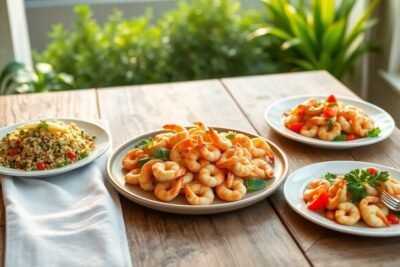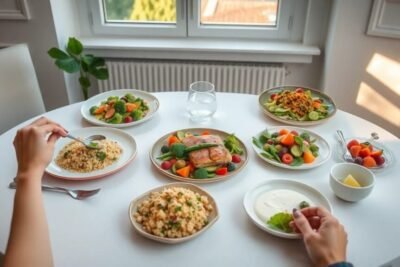
Delicious and Budget-Friendly Diabetic Meals
- Understanding Diabetes and Nutrition
- The Importance of Budgeting for Diabetic Meals
- Key Components of Diabetic-Friendly Meals
- Meal Planning Strategies on a Budget
- Easy and Affordable Diabetic-Friendly Recipes
- Tips for Shopping Smart on a Budget
- Staying Motivated and Inspired
- Common Mistakes to Avoid When Meal Planning on a Budget
- Conclusion: Embracing Healthy Eating on a Budget
Understanding Diabetes and Nutrition
Diabetes is a chronic condition that affects how the body processes glucose, a key source of energy derived from food. There are primarily two types of diabetes: Type 1, where the body lacks insulin production, and Type 2, which results from insulin resistance or insufficient insulin production. According to recent statistics, diabetes affects millions globally, making it imperative to understand its implications for health and nutrition.
Proper nutrition plays a pivotal role in managing diabetes. Maintaining consistent blood sugar levels is essential for preventing complications associated with the condition. One of the critical aspects of diabetic management is the careful selection of foods, particularly carbohydrates. Carbohydrates are broken down into glucose, and when consumed excessively or without consideration, they can lead to spikes in blood sugar levels. Therefore, integrating diabetic friendly meals on a budget becomes crucial for individuals managing this condition.
When planning meals, it is essential to focus on the glycemic index (GI) of foods. The GI ranks foods based on how quickly they affect blood sugar levels. Foods with a low GI tend to cause a gradual increase in blood sugar, making them favorable choices for diabetic individuals. Alongside this, pairing carbohydrates with proteins and healthy fats can further help in regulating blood sugar levels. This balance is vital as it promotes satiety and aids in better blood sugar control.
In addition to managing carbohydrate intake, understanding the role of sugars is also important. Added sugars can significantly impact glycemic control and should be minimized or avoided. Incorporating a variety of whole foods, such as vegetables, lean proteins, and whole grains, can assist in creating satisfying diabetic friendly meals on a budget. These foods contribute essential nutrients while supporting better health outcomes for individuals with diabetes.
The Importance of Budgeting for Diabetic Meals
Managing a diabetic diet does not solely involve choosing healthy foods; it also encompasses the critical aspect of budgeting. Planning diabetic friendly meals on a budget is essential for both health and financial stability. By effectively budgeting, individuals can ensure that they meet their nutritional needs without overspending, which is particularly important in an era of rising food costs. Understanding how to prioritize these needs while keeping expenses manageable can lead to substantial long-term benefits.
One of the primary advantages of budgeting for diabetic meals is the ability to focus on the nutritional value of ingredients rather than their cost. Whole grains, lean proteins, vegetables, and healthy fats are typically more beneficial for diabetics and can often be procured at reasonable prices. By making a plan and choosing seasonal produce or bulk foods, individuals can significantly lower their grocery bills while still enjoying varied and delicious diabetic friendly meals. Furthermore, utilizing resources such as local farmers' markets can yield fresh and affordable ingredients that support a healthy lifestyle.
Additionally, creating a meal plan helps in avoiding impulse purchases and food waste. A structured approach allows individuals to select recipes that use similar ingredients, thus maximizing their use while minimizing costs. It's also beneficial to keep an eye out for store promotions, discounts, or coupons, which can further aid in developing a budget-friendly shopping list. In doing so, not only can one enjoy diverse and diabetic friendly meals, but they can also maintain their health and well-being without sacrificing quality.
In conclusion, budgeting for diabetic meals is a vital strategy that can lead to healthier eating patterns while effectively managing costs. By prioritizing nutritional value and sticking to a plan, individuals can navigate their dietary needs successfully, make culinary choices that support their health, and enjoy quality meals without financial strain.
Key Components of Diabetic-Friendly Meals
When preparing diabetic-friendly meals on a budget, understanding the key components is essential for maintaining healthy blood sugar levels while enjoying a variety of flavors. A balanced meal typically consists of high-fiber carbohydrates, lean proteins, healthy fats, and an abundance of vegetables. Each of these elements plays a vital role in ensuring that meals are not only nutritious but also satisfying.
High-fiber carbohydrates are crucial for anyone managing diabetes. They help slow down the digestion process, which can stabilize blood sugar levels. Examples include whole grains such as quinoa, brown rice, and oats, as well as legumes like lentils and beans. Choosing these foods over refined carbohydrates can make a significant difference in meal planning. Additionally, incorporating fruits with lower glycemic indices, such as berries or cherries, can add natural sweetness without causing dramatic spikes in blood sugar.
Lean proteins are another essential aspect of diabetic-friendly meals. Sources such as chicken, turkey, fish, and plant-based proteins like tofu or tempeh offer high-quality nutrients without excessive saturated fats. Including protein in your meals contributes to a feeling of fullness, which is particularly important for those looking to manage their weight as well. Moreover, these proteins can help in muscle repair and overall health.
Healthy fats should not be overlooked either. Incorporating sources such as olive oil, nuts, and avocados can enhance meal flavor while providing essential fatty acids. These fats promote heart health and can also help in balancing blood sugar levels by slowing carbohydrate absorption.
Lastly, filling half of your plate with a variety of non-starchy vegetables can ensure that you receive a plethora of vitamins and minerals. Vegetables like broccoli, spinach, and bell peppers are low in calories and carbohydrates, making them an excellent choice for diabetic-friendly meals on a budget. Therefore, by focusing on these components, individuals can create balanced, satisfying meals that align with their dietary needs.
Meal Planning Strategies on a Budget
Meal planning is an effective strategy for individuals with diabetes who wish to eat healthy while keeping expenses in check. By taking the time to design a weekly meal plan, you can ensure that your meals are both diabetic friendly and budget-conscious. Start by dedicating a few moments each week to create a structured meal plan that outlines breakfast, lunch, dinner, and snacks. This approach not only saves money but also helps reduce food waste.
When developing your meal plan, consider incorporating affordable, low-glycemic index foods that are ideal for diabetic friendly meals. Whole grains, legumes, and fresh vegetables should be staples in your diet. To further economize, make a shopping list based on your meal plan. This practice avoids impulse purchases at the store that can quickly add up and ensure that you acquire only those items necessary for your pre-planned dishes.
Utilizing pantry staples can significantly reduce your grocery costs. Items such as canned beans, frozen vegetables, and grains like brown rice can be budget-friendly components of many meals. Furthermore, buying seasonal produce can lead to substantial savings while providing nutritional variety. Look for sales and bulk discounts that allow you to stock your pantry without breaking the bank.
Consider also batch cooking certain meals that can be stored for later consumption. Options such as soups or stews often freeze well and can serve as quick diabetic friendly meals on a budget during busy weeks. Additionally, reimagining leftovers can save money and time; for instance, grilled chicken one night can be turned into a salad or stir-fry the next day. This multi-use approach not only keeps meals varied and exciting but also enhances overall meal satisfaction.
Easy and Affordable Diabetic-Friendly Recipes
Eating a balanced diet is essential for managing diabetes, but this does not mean compromising on flavor or breaking the bank. Below, we present a selection of easy-to-make diabetic-friendly meals on a budget. Each recipe is designed to be both nutritious and economical, ensuring you can maintain a healthy lifestyle without overspending.
Recipe 1: Vegetable Stir-Fry
Ingredients: 1 cup of mixed bell peppers, 1 cup of broccoli florets, 1 medium carrot, 2 tablespoons of low-sodium soy sauce, 1 teaspoon of olive oil, and ½ teaspoon of garlic powder.
Estimated Cost: $6.00
Instructions: Begin by slicing the bell peppers and carrot into thin strips. In a pan over medium heat, add the olive oil. Once heated, add the vegetables and stir-fry for about 5-7 minutes until they are tender yet crisp. Finish by sprinkling the garlic powder and soy sauce, mixing well. Serve this dish over brown rice or quinoa for a complete meal.
Recipe 2: Lentil Soup
Ingredients: 1 cup of lentils, 1 medium onion, 2 cloves of garlic, 1 diced tomato, 4 cups of vegetable broth, and seasonings to taste.
Estimated Cost: $5.50
Instructions: Start by sautéing diced onions and garlic in a large pot until translucent. Add the lentils and diced tomatoes, followed by vegetable broth. Bring the mixture to a boil, then reduce to a simmer and let cook for approximately 30 minutes until lentils are soft. Adjust seasoning as per taste. This hearty soup is packed with protein and fiber.
Recipe 3: Quinoa Salad
Ingredients: 1 cup of cooked quinoa, 1 cup of chopped cucumber, 1 cup of cherry tomatoes, ¼ cup of feta cheese, and 2 tablespoons of olive oil.
Estimated Cost: $7.00
Instructions: In a mixed bowl, combine the cooked quinoa with chopped vegetables and feta cheese. Drizzle with olive oil and toss to combine. This refreshing salad is perfect for a light lunch or as a side dish for dinner. The quinoa offers a nutrient-dense base that is diabetic-friendly and cost-effective.
These recipes represent just a few options for creating diabetic-friendly meals without straining your budget. By selecting whole, nutrient-dense foods and planning meals in advance, anyone can enjoy tasty and healthy dishes that cater to their dietary needs.
Tips for Shopping Smart on a Budget
When it comes to managing diabetes, making informed choices while shopping for groceries is vital. By implementing smart shopping strategies, it is possible to prepare diabetic friendly meals on a budget and maintain a nutritious diet. One of the most crucial aspects is reading nutrition labels diligently. Understanding portion sizes, caloric content, and sugar levels is essential in selecting items that complement a diabetic-friendly diet. Opt for products with lower glycemic index and those enriched with whole grains, as they release glucose more slowly into the bloodstream.
Bulk buying is another practical strategy for saving money. Purchasing staples such as brown rice, lentils, and whole grain pasta in larger quantities can significantly reduce costs over time. These items can serve as the foundation for diverse diabetic friendly meals on a budget. Just be cautious to check the expiry dates and storage conditions to avoid spoilage. Furthermore, consider creating a weekly meal plan based on the bulk items you purchase to minimize food waste and make the most of your groceries.
Shopping seasonally is an additional way to cut costs and ensure you're consuming fresh produce. Fruits and vegetables in season are not only more affordable but also richer in nutrients. Visiting local farmers' markets can yield great deals and subsequently inspire new recipes for diabetic friendly meals. Moreover, don't overlook store brand products; they frequently offer the same quality as name brands at reduced prices. By focusing on these approaches, you can enrich your diet without straining your finances while effectively managing diabetes.
Staying Motivated and Inspired
Embarking on a journey toward healthy eating, particularly with a focus on diabetic friendly meals on a budget, can be challenging. However, it is essential to stay motivated and inspired throughout this process. One effective method is to seek community support. Engaging with local groups or online forums dedicated to diabetes management can provide encouragement and valuable insights. These communities often share their experiences, recipes, and coping strategies that can be both uplifting and educational.
Social media has revolutionized the way individuals connect and share information. Platforms such as Instagram, Pinterest, and Facebook are excellent resources for finding diabetic friendly meal ideas. By following chefs, nutritionists, and organizations focusing on diabetes-friendly cooking, you can discover new recipes and meal inspirations. Additionally, participating in online challenges or themed cooking weeks can stimulate creativity in your meal preparation, thus making the experience enjoyable.
Setting small, achievable goals can significantly influence your motivation levels. Rather than attempting to overhaul your entire diet at once, start with manageable changes, such as cooking one diabetic friendly meal on a budget each week. This approach can prevent feelings of overwhelm and foster a sense of accomplishment as you meet each goal. Tracking your progress, whether through a food diary or a mobile application, can provide visual evidence of your successes, further reinforcing your commitment to healthy eating.
Finally, it is vital to celebrate the small victories along the way. Whether it’s successfully creating a delightful diabetic-friendly dish or receiving positive feedback from a peer, acknowledging these moments helps reinforce your dedication to this nutritional journey. By cultivating a supportive environment, utilizing social media resources, and setting achievable goals, you can maintain your motivation and continue to explore diverse, budget-friendly meal options that align with your health needs.
Common Mistakes to Avoid When Meal Planning on a Budget
When planning diabetic-friendly meals on a budget, it is essential to be aware of common mistakes that can hinder both dietary goals and financial savings. One frequent pitfall is the over-reliance on processed foods. While these products may seem convenient and budget-friendly, they often contain hidden sugars and unhealthy fats that can have negative effects on blood sugar levels. Instead, prioritizing whole, unprocessed ingredients will help ensure that meals are both nutritious and suitable for managing diabetes effectively.
Another mistake to consider is neglecting meal variety. Preparing the same meals repeatedly can lead to boredom and may also cause deficiencies in certain nutrients. Incorporating a diverse range of foods not only enhances the taste and enjoyment of meals but also ensures a more balanced intake of essential vitamins and minerals. Experimenting with different recipes and ingredients can also make meal planning more exciting and enjoyable.
Additionally, many individuals might overlook the importance of proper portion control when it comes to diabetic-friendly meals on a budget. It is easy to underestimate serving sizes, leading to overconsumption of calories and carbohydrates. Utilizing measuring tools or familiarizing oneself with appropriate portion sizes can significantly improve one's ability to maintain healthy eating habits while keeping costs down.
Shopping without a list is another common mistake that can result in impulsive purchases, including unhealthy options. A well-planned grocery list based on a careful meal plan can aid in avoiding this issue and can promote adherence to a diabetes-friendly diet within budget constraints. Lastly, not taking advantage of sales, discounts, or seasonal produce can limit savings. By being mindful of these potential errors, individuals can successfully navigate the meal planning process while adhering to both budgetary and diabetic requirements.
Conclusion: Embracing Healthy Eating on a Budget
Maintaining a healthy diet is crucial for those managing diabetes, and it is possible to do so without incurring high costs. Throughout this post, we have highlighted a variety of diabetic friendly meals on a budget that are not only affordable but also nutritious. By planning meals ahead of time and opting for ingredients that are both health-conscious and wallet-friendly, individuals can achieve their dietary goals without financial strain.
One of the key strategies is to prioritize home cooking, which allows for greater control over ingredients, portion sizes, and overall quality of the meals consumed. Incorporating whole foods such as vegetables, grains, and lean proteins can help lower overall meal costs while ensuring they remain diabetic friendly. Moreover, utilizing seasonal produce and purchasing items in bulk can lead to significant savings, making balanced and healthful eating a practical option for nearly everyone.
Additionally, meal prepping can be an invaluable practice. By setting aside specific times to prepare meals for the week, individuals can easily create diabetic friendly meals on a budget, ensuring that healthier options are always readily available. Simple yet satisfying recipes focusing on legumes, whole grains, and fresh produce can contribute significantly to both health and savings.
Ultimately, it is essential for those managing diabetes to understand that healthy eating does not have to be an expensive venture. By leveraging affordable ingredients, embracing cooking at home, and being mindful of meal planning, anyone can enjoy delicious meals that support their health and lifestyle. We encourage readers to take actionable steps toward integrating these budget-conscious and diabetic friendly recipes into their daily routines, paving the way for healthier living.










